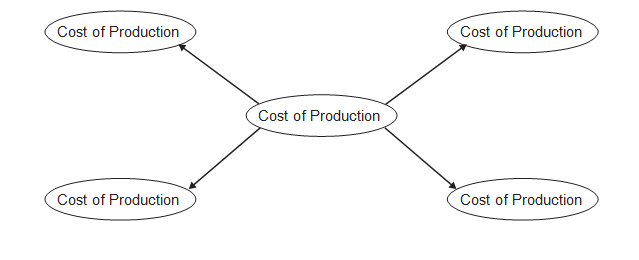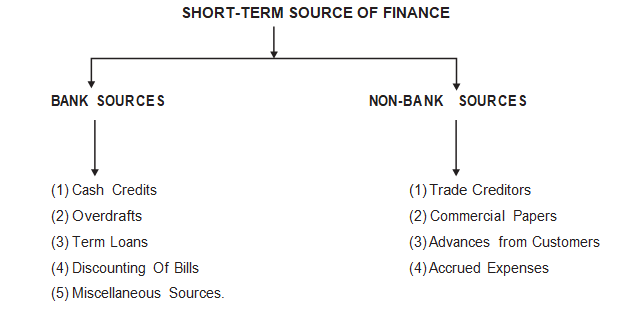Answer:
Financial Analysis:- Financial Analysis discuss the estimates and projections required for financial appraisal. Financial Analysis includes eight factors as follows:-
- Cost of Project
- Means of Financing
- Estimates of Sales and Production
- Cost Of Production
- Working Capital Requirements and its financing
- Projected Profitability Statements
- Projected Cash Flow Statements
- Projected Balance Sheets.
- Cost of Project: – Conceptually, the cost of project represents the total of all items of outlay associated with a project which are supported by long-term funds. It is the sum of the outlays on the following:-
- Land and Site Development
- Buildings and Civil Works
- Plant & Machinery
- Technical know-how and engineering fees
- Expenses on foreign technicians and training of Indian technicians
- Pre-operative expenses
- Miscellaneous Fixed Assets
- Preliminary Expenses
- Margin money for working capital
- Means of Finance: To meet the cost of project the following means of finance are available:-
- Debt: Debt means long term loans and includes:
- Debentures
- Loan from Bank
- Loan from Financial Institutions
- Mortgage Loans
- Equity: Equity refers to shareholder’s funds and includes:
- Equity Share Capital
- Preference Share Capital
- Reserve
- Accumulated Profits
- Debt: Debt means long term loans and includes:
- Estimates of Sales and Production:- The starting point for profitability projections is the forecast of sales revenues. The following considerations should be borne in mind:
- It is not advisable to assume a high capacity utilization level in the first year of operation.
- It is not necessary to make adjustments for stocks of finished goods. For practical purposes, it may be assumed that production would be equal to sales.
- The selling price considered should be the price realizable by the company net of excise duty.
- The selling price used may be the present selling price-it is generally assumed that changes in selling price will be matched by proportionate changes in cost of production.
- Cost of Production:- The major components of cost of production are:
- Material Cost
- Utilities Cost
- Labour Cost
- Factory Overhead Cost

- Working Capital Requirements and its Financing:- In estimating the working capital requirements and planning for its financing, the following points have to be born in mind:
- The working capital requirement consists of the following:-
- Raw Materials
- Stock of work-in-process
- Stock of finished goods
- Debtors
- The sources of working capital finance are:
- The working capital requirement consists of the following:-

- Projected Profitability Statements:- Given the estimates of sales revenues and cost of production, the next step is to prepare the profitability projections or estimates of working results. The estimates of working results may be prepared along the following lines:
- Cost of Production
- Total Administration Expenses
- Total Sales expenses
- Depreciation
- Total Cost of production ( (i) + (ii) + (iii) + (iv) )
- Expected Sales
- Operating Profit((vi)-(v)
- Other Income
- Preliminary Expenses write off
- Profit/loss before taxation((vii) + (viii) -(ix) )
- Provision for Taxation
- Profit After Tax ( (x)-(xi) )
Less: Dividend on
-Equity Capital
-Preference Capital
- Projected Cash Flow Statements:- The cash flow statement shows the movement of cash into and out of the firm and its net impact on the cash balance within the firm. In this statement sources of funds and applications of funds are calculated and then surplus or deficits are find out.
CASH FLOW STATEMENT
| Sources of Funds: 1. Share Issue 2. Profit before taxation with interest added back 3. Depreciation provision for the year 4. Increase in secured medium and long-term borrowing for the project 5. Increase in unsecured loans and deposits 6. Increase in bank borrowings for working capital 7. Sale of Fixed Assets 8. Sale of Investments 9. Other Income Total (A) Disposition of Funds: 1. Capital expenditure for the project 2. Increase in working capital 3. Decrease in secured medium and long-term borrowing for the project 4. Decrease in unsecured loans and deposits 5. Decrease in bank borrowings for working capital 6. Interest on term loans 7. Taxation 8. Dividends- -Equity -Preference 9. Other expenditure Total (B) Opening balance of cash in hand and at bank Net Surplus/Deficit (A-B) Closing balance of cash in hand and at bank |
- Projected Balance Sheet:- The balance sheet, showing the balance in various asset and liability accounts, reflects the financial condition of the firm at a given point of time. The format of a balance sheet is given below:

Total Views: 46
